“You need to try a peated scotch.” You’ve heard it at every bar and liquor store. But what is peat? And what is a peated scotch?

Whether you’re a brand new scotch-drinker or you’ve been making the round for a few months, you’ve undoubtedly heard of peated scotch. Bartenders and scotch-lovers bandy the word about like you’re supposed to just magically know what it is.
If you’re really new to scotch and have never heard of peat, try this introductory article instead!
But all you know is “peat” is synonymous with those heavy, smelly, smoky scotches that burn your nose and connoisseurs insist you taste to prove a point. (Usually their own.)
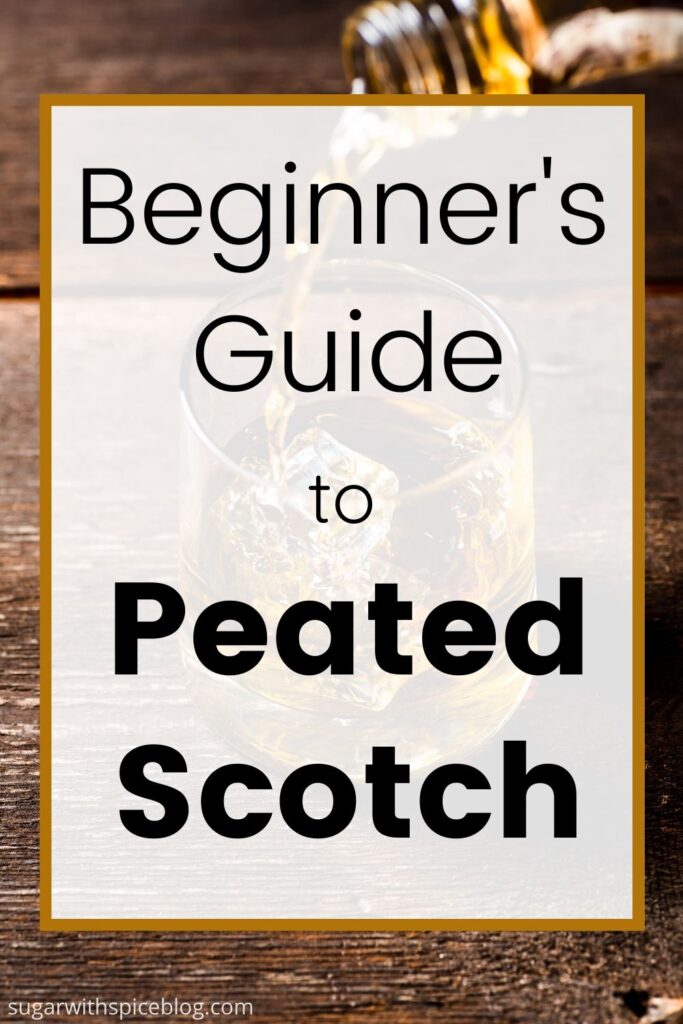
I am actually in the crowd of scotch-lovers who think everyone needs to try a peated scotch at least once in their whisky journey. But it’s hard to appreciate something like peat without understanding it first.
So what is the deal with this peated scotch? Let’s go over what peat is, how it’s used and what peated scotch actually tastes like.
What is peat?
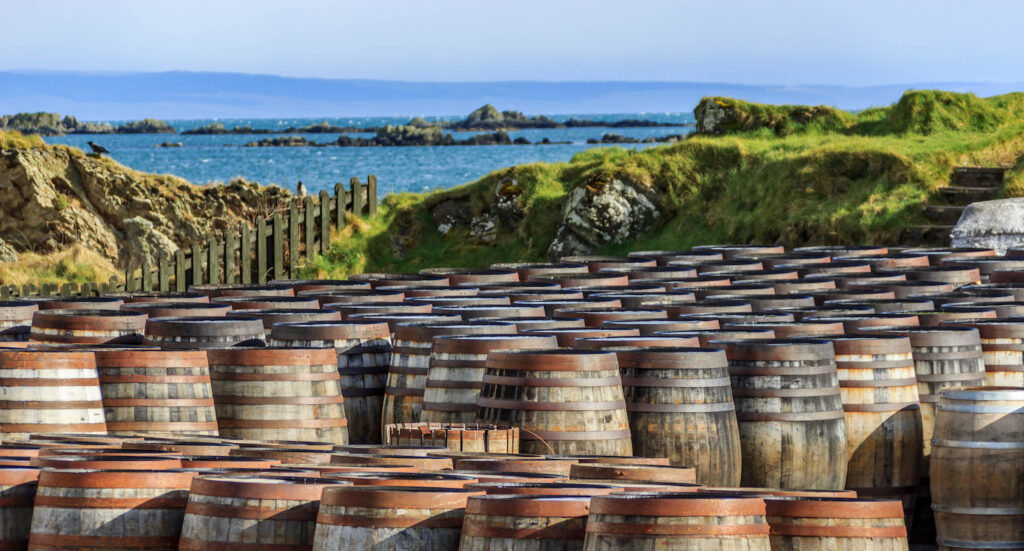
Peat is decomposing plant matter that’s been starved of oxygen underground for many years. But wait! Before you go “eeeuuhhhh” and leave this page, bare with me.
Remember when you were a kid and made mud bricks in your backyard all the time? (It couldn’t just have been me.) Well peat is basically the most advanced mudbrick ever. You can even burn it for fuel! Which is how the peat gets into the whisky, but we’ll get to that later.
Imagine a world where the weather is constantly wet and most of the ground is covered in swampy moss. It’s going to be pretty hard to find dry firewood, right? But what if you could burn the very moss you trudge through on your way to the pub?
When the assorted plant matter dies, it sinks slowly into the ground and begins to decompose. Over years, the decaying plant matter becomes compressed and full of chemicals like phenols, guaiacols, and syringols. These chemicals create the flavors and smells you notice in the whisky.
Harvesting Peat
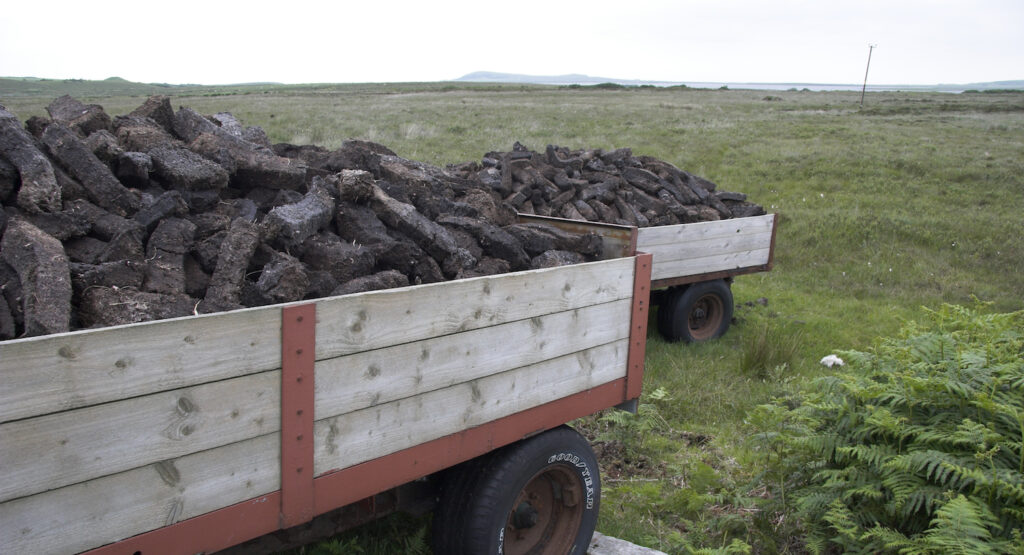
Peat is normally harvested by hand. (Yes, making mudbricks is a real, adult job. If only 5 year-old-me knew that!) Peat is typically cut out of the ground in squares or bricks and left to dry before being used as fuel.
Peat actually forms over thousands of years. So it’s considered a nonrenewable resource.
What does peated scotch taste like?
We’ll get more in depth on this later, because there are multiple types of peat. And multiple types of scotch. It all depends on the type of plants . But let’s answer the basic question first.
A typical peated scotch tastes smoky and woody. You’ll note flavors like campfire, wood smoke, leather, and salt. And sometimes you might catch smoked fish or meat notes as well.
The finer details all depend on where the peat came from and which scotch you’re tasting.
About Scotch
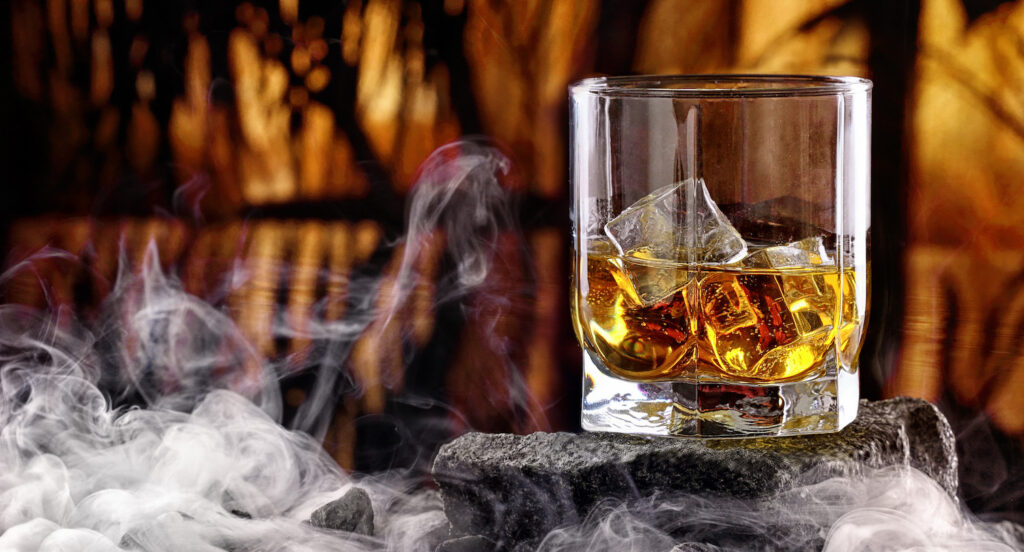
Before we get into the details of adding peat to scotch, let’s just quickly review the definition of scotch and how it’s made.
What is scotch whisky?
Whisky: a distilled liquor made from fermented grains.
These grains generally include barley, rye, wheat, or corn. New whisky is a white alcohol, clear in color. Most whisky is then aged in wooden barrels, which is where it develops its brown color and richer flavors
But we’re specifically discussing scotch, so let’s delve a little deeper.
Scotch: barley whisky made in Scotland.
Of course it’s a little more complicated. There are laws and rules pertaining to every part of scotch production. Scotch is actually one of the most tightly regulated spirits in the world. Which is part of why it is so revered and so expensive. You’re paying for consistent quality and you know exactly what you’re getting in each bottle.
While we could write a whole article on the various laws and regulations, below are the key ones you need to remember when you’re just starting out. Scotch must be:
- produced, stored, and bottled in Scotland
- made from only malted barley
- aged for a minimum of 3 years in oak barrels

Where is scotch from?
“Oh, even a newbie can answer that!” you say, “Scotland. Next question.”
Actually, it’s a little more complex. Yes, legally scotch must come from Scotland. But Scotland is rather large. And, of course, each distinct area has its own style. Think of it like wine terroir, but for whisky.
- The Highlands – the largest region with huge variety in styles
- The Lowlands – mellow, citrusy, and feminine
- The Islands – heather and peat with honey and smoke
- Islay – heavily peated, smoky, meaty scotches
- Campbelltown – highly distinctive wet wool notes with salt brine and smoked toffee
- Speyside – light with sweet notes, floral and citrusy with notes of honey
Most peated scotches come from Islay or the Islands, with a few Highland varieties thrown in for good measure. So if you hear someone say “It’s an Islay whisky,” can be fairly sure it’s peated.
How is Scotch Made?
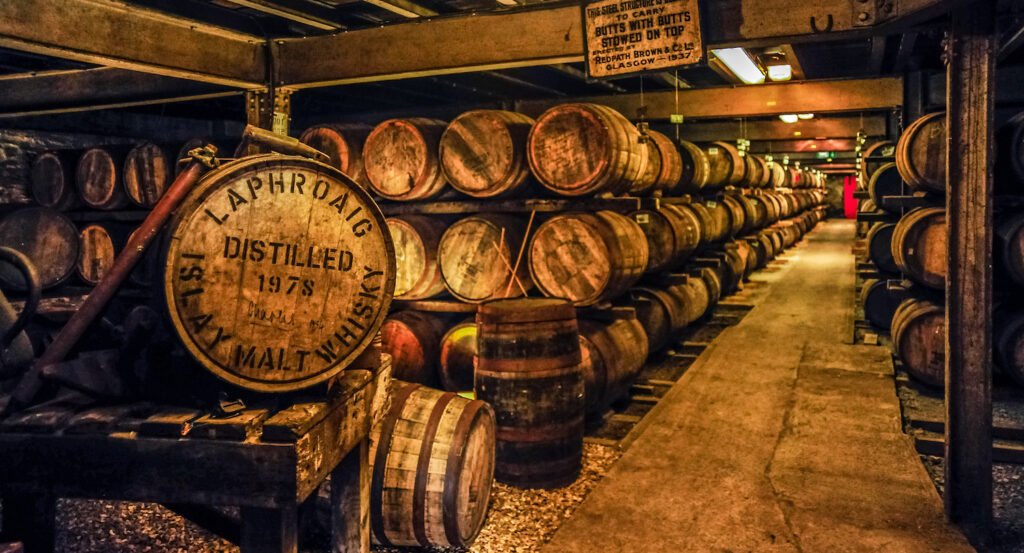
The regulations above mean the basic process of scotch production is the same across all distilleries in Scotland. Each distillery adds their own twist, for example:
- the type of fuel used to dry the malt
- the type of water used in the mash
- how quickly they “cut” the whisky
- the type of barrels used in aging
But the basic process remains the same.
Malting and Mashing
Step 1: Harvested barley is “malted,” or allowed to germinate and begin to sprout. Germination is quickly halted using heat.
Step 2: *PEAT COMES IN HERE!* The seeds are toasted slowly, then combined with warm water to create a mash. The natural enzymes in barley breakdown the sugars to convert the mash to wort.
Fermenting and Distilling
Step 1: Wort flows to a fermentation tank and combines with yeast to begin fermentation and alcohol production. Once the wort has reached around 8% ABV it is called “wash” and is transferred to stills for distillation. All scotch is distilled twice.
Step 2: The first distillation removes impurities in copper pot stills by raising the temperature slowly to separate alcohol from water vapors.
Step 3: Once the remaining alcohol vapors from the first distillation have recondensed, the alcohol goes through a second distillation. This time, it’s in a ‘spirit’ still to remove the remaining water or chemicals and create pure, high ABV whisky.
Step 4: Final purification occurs during the “cutting” phase when the master distiller separates the purest and most flavorful part of the whisky for final aging. The whisky distills in three parts: the head, the heart, and the tail.
The heart is the most flavorful part, and the one that eventually goes on to aging. The master distiller controls exactly where are when the heart is divided from the head and tail, which eventually determines the flavor and intesity of your scotch!
Aging
The final clear distillate is then transferred to oak casks for aging, a minimum of 3 years. The type of cask will vary based on the master distiller’s intention for the whisky.
This is where most of the flavor and color developes.
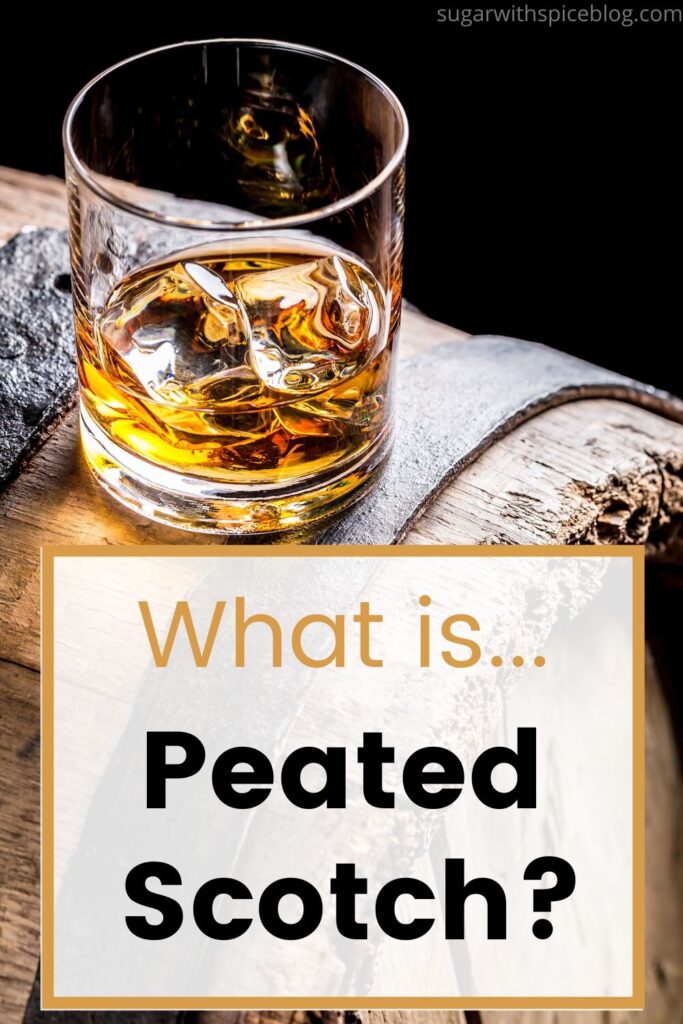
Where does peat come in?
There are two ways peat can enter your whisky. The first is through the water. Most distilleries are very proud and exclusive when it comes their water supply. (And since water makes up such a huge part of whisky distillation and the final product, who can blame them!)
If a distillery’s water source flows through peat beds, you’ll likely get a bit of peat flavor in the finished dram. This is why some unpeated scotches will still have faint peat notes in the background.
But to be a “peated” scotch with true smoky flavor, the peat needs to be added during the drying process. The barley needs to dry over heat. And what is one possible fuel for that heat? Peat bricks! As the peat fuel burns, it dries out the barley and infuses it with peat smoke and flavor.
What are the types of peat?
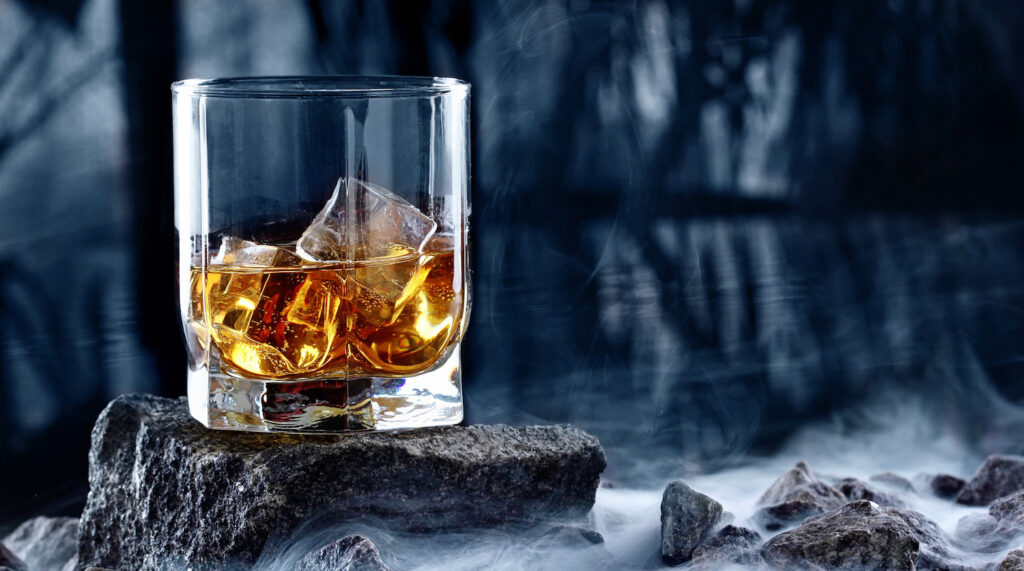
Of course, since peat comes from all over Scotland, you can have as many types of peat as you can scotch! As the plant life changes across the country, so does the character and content of the eventual peat fuel.
You can find peats that are higher in heather. Some have more moss. Others have more shrubbery. Some coastal peat even has decomposing marine life. (Have I said decomposing enough in this article?) As mentioned above, the different contents of each peatbed determines which chemicals are produced and what the final flavor will be.
There are three main types of peat, according to Whisky Advocate: medicinal, spicy, and aromatic. This means that in addition to the typical mossy, smoky flavor, you’ll get additional flavors specific to the peat used.
Medicinal Peat
Medicinal is probably one of the most common descriptors you hear about peat. The flavors here can include antiseptic, iodine, bandages, and even the generic “hospital.” You also get flavors like seaweed, moss, and salted meat or fish. And most usually have a vanilla quality as well.
Spicy Peat
My personal favorite variety, spicy peats tend to have a bit more bite to them. You find white or black pepper, and often other warm baking spices like cinnamon, nutmeg, cloves, allspice or chilis. But there’s a level of sweetness too, usually in dried orchard fruits like apples or pears.
Aromatic Peat
A softer, more delicate version, aromatic peats tend to have stronger floral, fruit, and honey notes. Lavender, heather, dried apricots, dried orange peels, and even toffee or caramel are typical tasting notes. They can overlap a bit with spicy peats if they have some cinnamon or nutmeg flavor as well.
Best Peated Scotches

Alright, you’ve gotten past the idea of decomposing, decaying plant matter in your drink. (Oh, still on that are you?) Now it’s time to pick where in the peated scotch world you want to begin!
Medicinal Peated Scotch: Laphroaig 10 Year
If there was a poster child for medicinal scotch, Laphroaig 10 would be it. It’s a classic medicinal peat with strong notes of antiseptic, bandaids, and iodine. Seriously Johnson and Johnson could use this stuff in an ad campaign.
I am not personally a fan. To me Laphroaig tastes like drinking a hospital hallway, and I’ve seen enough of those in my life. But Vasiliy absolutely loves it and makes me put it on these lists. (I left it off of my summer list and it drove him batty.) That said, it is a very popular peated scotch, so there must be something to it? No accounting for taste I suppose.
Spicy Peated Scotch: Talisker 10 Year
One of my first loves, Talisker will always have a place in my heart. Spicy pepper warms up a stormy dram that reminds you of wind-swept coasts. (Which makes sense, it comes from the storm-tossed Isle of Skye.)
There are fewer baking spices in this particular spicy peat. Talisker 10 has a heavy dose of wood smoke and pepper spice. But the big flavor is orchard fruits: dried apples, raisins, and pears. A lovely mix of spiced fruits and salty marine flavor, with just enough smoke and pepper to keep you cozy by the fire.
Aromatic Peated Scotch: Highland Park 12
A classic aromatic peat, Highland Park 12: Viking Honor is probably one of the best beginner peated scotches on the market. The peat here has much more heather, so you’ll note some honey sweetness and caramel flavors, and an almost floral lavender quality.
The first sip just smells like honey and fruit and flowers and spring! You’ll hardly notice any peat at all on the nose. I even find hints of tropical mango and pineapple or milk chocolate. It tastes a bit like something you’d drink out in your back garden or by the pool! Light, refreshing, with just enough smoke to leave a rich, spicy finish. Works very well as a summer or spring sip!
Summer Peated Scotch: Ardbeg 10
Not the most popular summer choice as Ardbeg 10 is a very intensely peated scotch. But to me, it tastes like a big bonfire on the beach! Don’t be fooled, however, Ardbeg 10 is another medicinal peat. So you’ll get a strong dose of iodine mixed in with your citrus, herbs, vanilla, and sea salt.
Ardbeg is deceptively pale in color, but it packs a flavorful punch. There’s a salty marine quality that tastes a bit like sea breeze, oyster brine, or smoked fish. (Hence my visions of a beach.) But what attracts me most is the green, herby, mossy, minty flavor that underlies each sip. And something like a fresh squeeze of lime? It just tastes so fresh, almost like a very smoky mojito!
It’s also the base of one of my all-time favorite summer cocktails: The Adventures of Peat and Peach!
Looking for other summer scotches, try this list of refreshing summer drams. (Most don’t have peat!)
Winter Peated Scotch: Lagavulin 16
Lagavulin is one of the most intense and peated scotches from Islay. (And possibly my favorite dram of all!) But the strong smoky peat flavor blends well with all of the subtle flavors and creates a really seamless and exceptional drink.
The peat itself is often described as resembling a mix of Lapsang Souchong tea, tobacco, and kippers. It sounds revolting, I know, but the combination is comforting and incredibly cozy. Personally, I reserve it for special occasions simply because it’s so lovely.
Lagavulin 16 treads the line between spicy and medicinal. There’s a bit of an “apothecary shop” hint to the nose with smoked bacon and fish as well. But the flavor is surprisingly sweet with notes of apples, oranges, dried figs, and toffee. You’ll also get the hints of baking spices missing from Talisker. Cinnamon, nutmeg, vanilla, a bit of faint chocolate. And the hot black pepper and chili spice finish make it a perfect drink for cold nights around Christmas!
Here’s a full list of delicious winter scotches, perfect for warming up in cold weather.


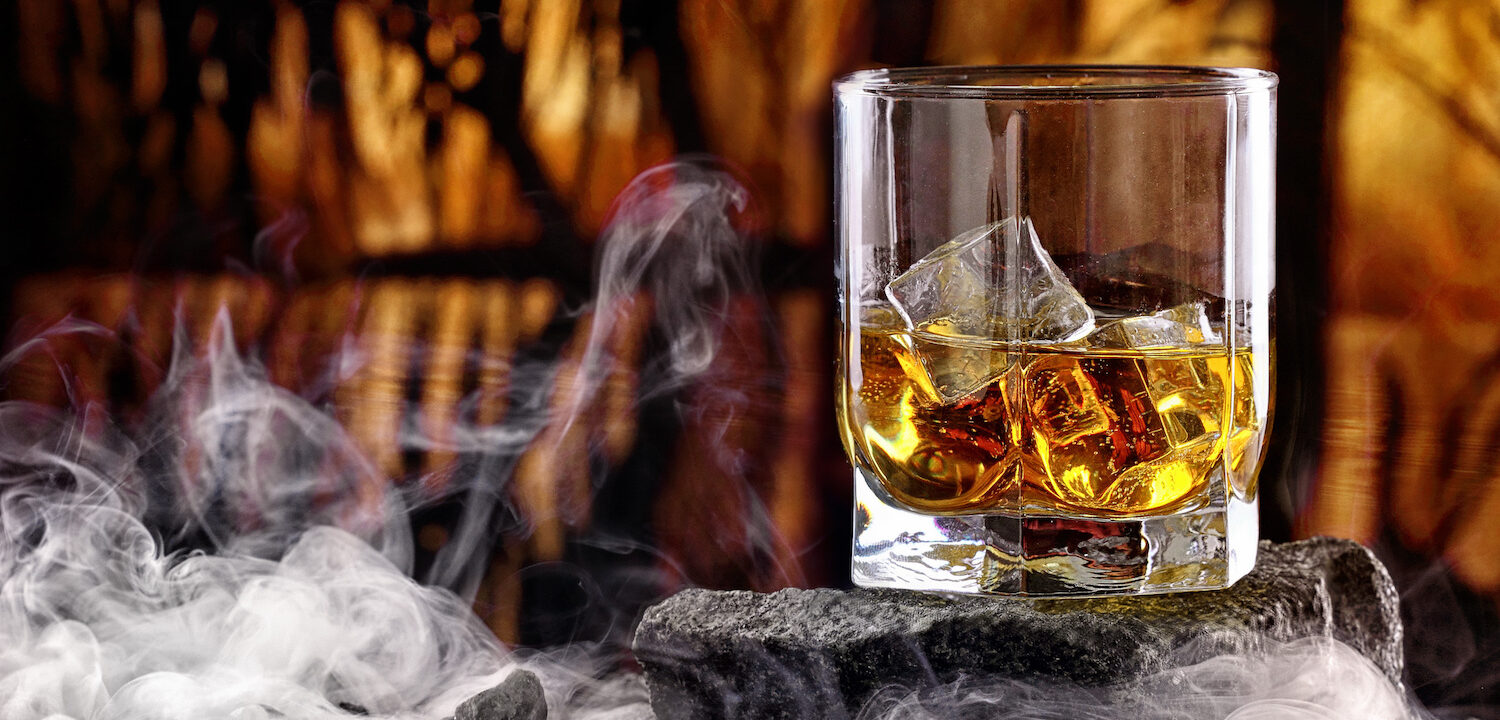


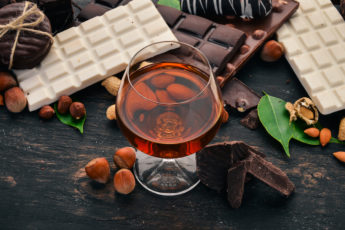





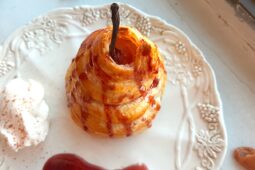

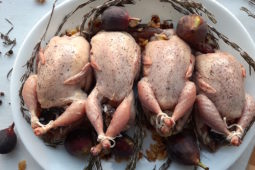
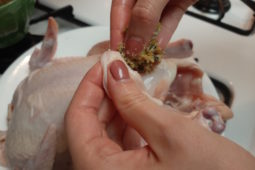

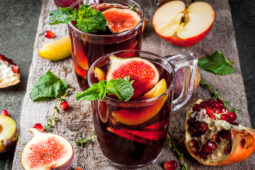

Leave a Comment